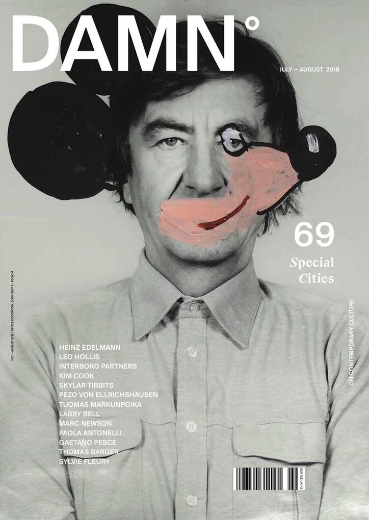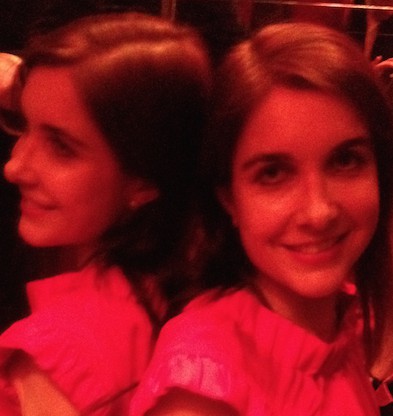This domestic-oriented approach and belief in the ‘reality of spaces within or around buildings’, reflects its philosophy about architecture's role in enhancing the individuality of everyday living. Meanwhile, the abstract, geometric sensibility of their aesthetic engenders spatial experiences for the user to enjoy. Pezo, born in Chile in 1973, and Von Ellrichshausen, born in Argentina in 1976 and a jury member of the current Venice Architecture Biennale, spoke to DAMN° about the ideas behind their projects.
DAMN°: What are the possibilities for diverse architectural projects in Chile and how has this evolved in the last decade, since you curated the Chilean Pavilion at the 2008 Venice Biennale?
 Mauricio Pezo: When we curated the Chilean Pavilion, the internal debate was about the lack of public buildings, about a kind of debt when compared with better quality in the private sector, mostly in domestic architecture. Today, the notion of ‘Chilean architecture’ has been institutionalised, even as a commercial brand. The system seems too conformist, with few and feeble open competitions for larger commissions. But the architectonic quality, or even a sense of radicalism or risk, is lower than before.
Mauricio Pezo: When we curated the Chilean Pavilion, the internal debate was about the lack of public buildings, about a kind of debt when compared with better quality in the private sector, mostly in domestic architecture. Today, the notion of ‘Chilean architecture’ has been institutionalised, even as a commercial brand. The system seems too conformist, with few and feeble open competitions for larger commissions. But the architectonic quality, or even a sense of radicalism or risk, is lower than before.
DAMN°: Why do you have a predilection for individual houses and what values do you think this scale of architecture can embody?
 MP: We're intrigued by how we can keep asking the same fundamental questions: ‘How to live’ or ‘What does it mean to live well?’ We realise that our biological, emotional and intellectual capacities are the same as those of someone living at the other side of the world 2,000 years ago, and that we're imagining places for someone else to live in five, 10 or 50 years from now. An individual building implies a translation of very human individuality, always the same yet unique every time.
MP: We're intrigued by how we can keep asking the same fundamental questions: ‘How to live’ or ‘What does it mean to live well?’ We realise that our biological, emotional and intellectual capacities are the same as those of someone living at the other side of the world 2,000 years ago, and that we're imagining places for someone else to live in five, 10 or 50 years from now. An individual building implies a translation of very human individuality, always the same yet unique every time.
DAMN°: What different skills do each of you bring to your practice and how are you complementary to each other?

 Sofia von Ellrichshausen: Since we met, we've been thinking and building together, without separating life and work and almost without distinction of authorship. One of us is always better at speculating, dreaming and generating many ideas; the other one keeps their feet grounded for those ideas to be possible.
Sofia von Ellrichshausen: Since we met, we've been thinking and building together, without separating life and work and almost without distinction of authorship. One of us is always better at speculating, dreaming and generating many ideas; the other one keeps their feet grounded for those ideas to be possible.
MP: We've diluted our roles up to the point that we even paint on the same canvas. The signature on each drawing or painting has been transformed into a code, a number with 11 digits that indicates the precise moment in which that piece is finished. This practice has become an intimate record of time.
DAMN°: Your aesthetic has been described as ‘geometric abstraction’. Would you agree?
SvE: We're sceptical about explaining what we do through descriptive or analytical geometry. Instead, we're more interested in the basic spatial principles of topological geometry and the construction of spatial structures, sequences and relationships.
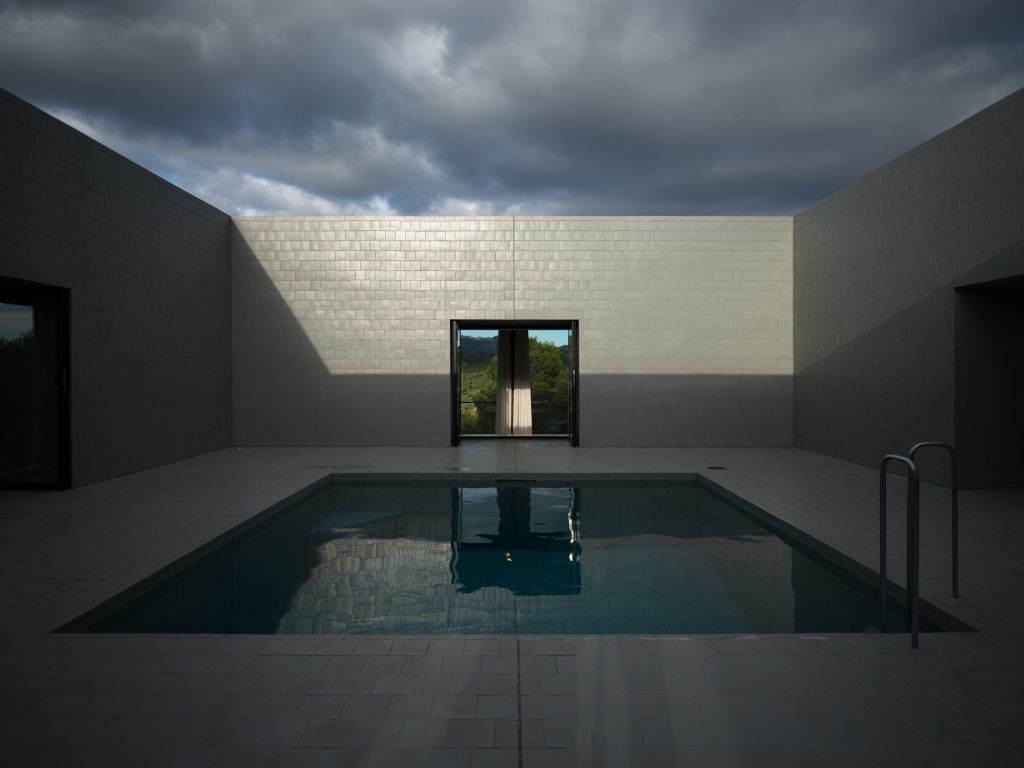
DAMN°: This year you completed Rode House, a wooden, crescent-shaped residence on a remote Chilean island that – depending on one's viewpoint – appears as a massive, hermetic fortified refuge or a large, pitched roof almost without supporting walls. What were you striving for?
MP: Rode House is an isolated house for retirement and contemplation for a single man, a diplomat mostly living abroad. It corresponds with the fictional character of a romantic rover who goes back and forth from civic protocols to natural laws; the house could be read as the embodiment of that polarity. It has a severe opaque presence, almost like a bended, thick wooden wall that cloisters a court, capturing the landscape within the domestic space. The interior is a literal reverse of the outer cylindrical and conical forms, and has a strong feeling of its mass and weight. One room faces the direct, warm northern light and the other room faces the indirect, cold southern one.
SvE: The 45-degree roof also contributes to the polarity. The slope falls towards the inner court, so you can move from room to room while looking at a curtain of rain falling before the landscape.
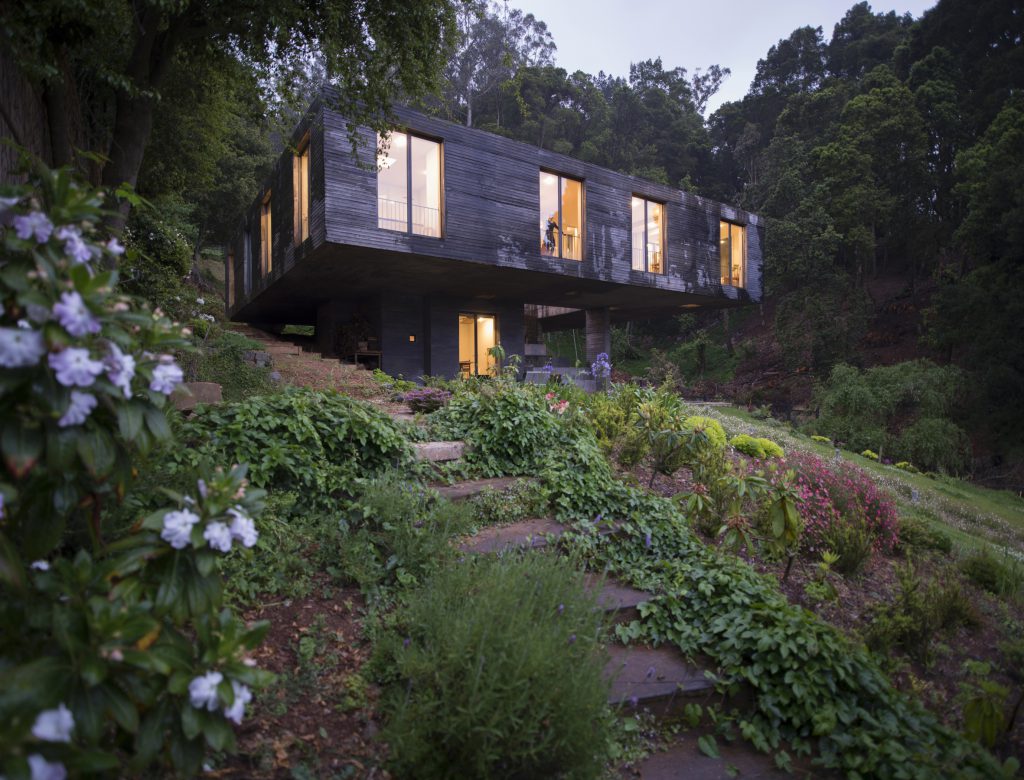
DAMN°: You've also completed Loba House in Chile, a tall, narrow, monolithic structure perched on the edge of a cliff, stretching out to the Pacific Ocean. How did you reflect on the natural topography?
SvE: Loba House is located on a dramatic place and the steep topography makes it difficult to walk there. To a certain extent, the house is a modest attempt to correct what was given by nature. The roof defines a horizontal podium that turns the roof into a long terrace to be exposed, or perhaps over-exposed, to the elements and the sea. Under that horizontal line, a single room descends with the natural terrain in a sequence of platforms. There are three massive columns and two bridges that interfere with that continuity, so the interior is perceived as larger than what it actually is.

DAMN°: What can you tell us about your other current projects?
MP: Unlike most architects who go around showing competitions or unbuilt work, we don’t like talking about what we haven't realised. We believe there is a sad anxiety in the architectural system. Almost everyone seems to be showing off sexy renderings to gain popularity. The architecture we're interested in cannot be reduced to a couple of concepts or diagrams.
DAMN°: How do you see the relationship between your architecture and art projects?
MP: Our position is precisely not to make those kind of disciplinary distinctions. We believe everything we do is art, either in the form of a poem, a painting, a pavilion or a house, and should aspire to fill an intellectual void that no work has filled before.
DAMN°: Last year you collaborated with the French artist Christian Boltanski on a pavilion for the MAC/VAL museum near Paris that would show a video about his installation, Monument to the Dead for the Living, in Chile's Atacama Desert. And RIBA commissioned you to create A Hall for Hull in northern England: a grid formation of 16 columns made from galvanised steel in collaboration with the Swiss artist Felice Varini. How did your ideas develop?
SvE: We were invited to translate Boltanski’s installation in the desert into another context. Our Bell Pavilion had to host a 24-hour video – a frozen, real-time loop that's a virtual journey to the desert. The rough and opaque construction evokes a sense of remoteness, perhaps as an ancient object forgotten in time.
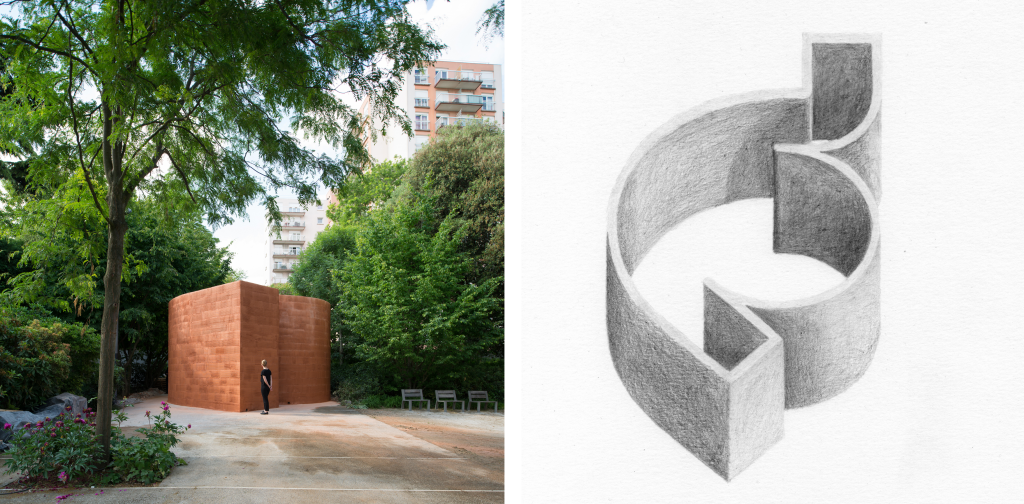
MP: A Hall for Hull was a temporary installation for a medieval square in front of a bizarre stone church. The cylindrical columns had an elusive presence, being both heavy and light, with a vibration given by the frosted galvanised steel and the perforated pattern on the metal plates. On top of the columns, there were three geometric paintings by Varini that could only be read from particular viewpoints.
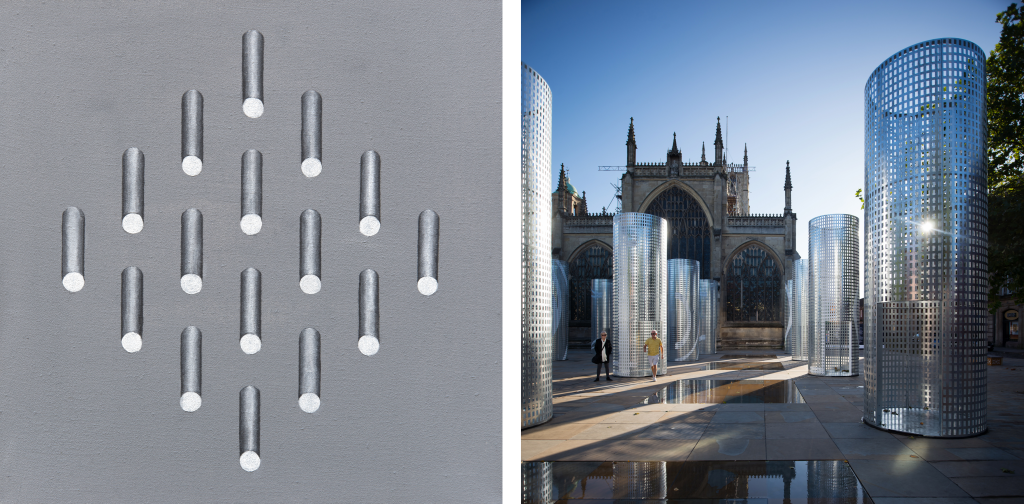
DAMN°: You've taught at architecture schools in the Chilean capital of Santiago and in Chicago, and later this year you're going to teach at Harvard and then at Cornell University. What advice do you give your students?
MP: We don’t believe architecture can be taught. It's a fundamental paradox that architects are invested with the privilege of projecting a new physical and mental reality into a future we have no clue about. We don't want to tell students how architecture should be because they'll be operating in an unimaginable future. We merely want to train their capacity to solve problems through awareness, sensibility and intelligence in order to articulate spatial conditions for human habitation.
pezo.cl
DAMN°: What are the possibilities for diverse architectural projects in Chile and how has this evolved in the last decade, since you curated the Chilean Pavilion at the 2008 Venice Biennale?

DAMN°: Why do you have a predilection for individual houses and what values do you think this scale of architecture can embody?

71707161201 (Exterior no 03), oil on canvas, 180 x 240 cm, 2016
DAMN°: What different skills do each of you bring to your practice and how are you complementary to each other?

Finite Format 04, 729 pieces, watercolour on paper, 21 x 28 cm each, 252 x 1701 cm overall dimensions, 2016

61008132120 (Interior no 09), oil on canvas, 60 x 60 cm, 2013
MP: We've diluted our roles up to the point that we even paint on the same canvas. The signature on each drawing or painting has been transformed into a code, a number with 11 digits that indicates the precise moment in which that piece is finished. This practice has become an intimate record of time.
DAMN°: Your aesthetic has been described as ‘geometric abstraction’. Would you agree?
SvE: We're sceptical about explaining what we do through descriptive or analytical geometry. Instead, we're more interested in the basic spatial principles of topological geometry and the construction of spatial structures, sequences and relationships.

Pezo von Ellrichshausen, Solo house, Cretas, Spain, 2009-2013. Photography: Pezo von Ellrichshausen
DAMN°: This year you completed Rode House, a wooden, crescent-shaped residence on a remote Chilean island that – depending on one's viewpoint – appears as a massive, hermetic fortified refuge or a large, pitched roof almost without supporting walls. What were you striving for?
MP: Rode House is an isolated house for retirement and contemplation for a single man, a diplomat mostly living abroad. It corresponds with the fictional character of a romantic rover who goes back and forth from civic protocols to natural laws; the house could be read as the embodiment of that polarity. It has a severe opaque presence, almost like a bended, thick wooden wall that cloisters a court, capturing the landscape within the domestic space. The interior is a literal reverse of the outer cylindrical and conical forms, and has a strong feeling of its mass and weight. One room faces the direct, warm northern light and the other room faces the indirect, cold southern one.
SvE: The 45-degree roof also contributes to the polarity. The slope falls towards the inner court, so you can move from room to room while looking at a curtain of rain falling before the landscape.

Rode House, Chonchi, Chile, 2016-2017. Photography: Pezo von Ellrichshausen
DAMN°: You've also completed Loba House in Chile, a tall, narrow, monolithic structure perched on the edge of a cliff, stretching out to the Pacific Ocean. How did you reflect on the natural topography?
SvE: Loba House is located on a dramatic place and the steep topography makes it difficult to walk there. To a certain extent, the house is a modest attempt to correct what was given by nature. The roof defines a horizontal podium that turns the roof into a long terrace to be exposed, or perhaps over-exposed, to the elements and the sea. Under that horizontal line, a single room descends with the natural terrain in a sequence of platforms. There are three massive columns and two bridges that interfere with that continuity, so the interior is perceived as larger than what it actually is.

Pezo von Ellrichshausen, Loba house, Coliumo, Chile, 2016-2018. Photography: Pezo von Ellrichshausen
DAMN°: What can you tell us about your other current projects?
MP: Unlike most architects who go around showing competitions or unbuilt work, we don’t like talking about what we haven't realised. We believe there is a sad anxiety in the architectural system. Almost everyone seems to be showing off sexy renderings to gain popularity. The architecture we're interested in cannot be reduced to a couple of concepts or diagrams.
DAMN°: How do you see the relationship between your architecture and art projects?
MP: Our position is precisely not to make those kind of disciplinary distinctions. We believe everything we do is art, either in the form of a poem, a painting, a pavilion or a house, and should aspire to fill an intellectual void that no work has filled before.
DAMN°: Last year you collaborated with the French artist Christian Boltanski on a pavilion for the MAC/VAL museum near Paris that would show a video about his installation, Monument to the Dead for the Living, in Chile's Atacama Desert. And RIBA commissioned you to create A Hall for Hull in northern England: a grid formation of 16 columns made from galvanised steel in collaboration with the Swiss artist Felice Varini. How did your ideas develop?
SvE: We were invited to translate Boltanski’s installation in the desert into another context. Our Bell Pavilion had to host a 24-hour video – a frozen, real-time loop that's a virtual journey to the desert. The rough and opaque construction evokes a sense of remoteness, perhaps as an ancient object forgotten in time.

Pezo von Ellrichshausen, Bell pavilion, Mac-Val, Paris, France, 2017. Photography: Pezo von Ellrichshausen
MP: A Hall for Hull was a temporary installation for a medieval square in front of a bizarre stone church. The cylindrical columns had an elusive presence, being both heavy and light, with a vibration given by the frosted galvanised steel and the perforated pattern on the metal plates. On top of the columns, there were three geometric paintings by Varini that could only be read from particular viewpoints.

Pezo von Ellrichshausen, Hall pavilion, Hull, UK, 2017. Photography: Pezo von Ellrichshausen
DAMN°: You've taught at architecture schools in the Chilean capital of Santiago and in Chicago, and later this year you're going to teach at Harvard and then at Cornell University. What advice do you give your students?
MP: We don’t believe architecture can be taught. It's a fundamental paradox that architects are invested with the privilege of projecting a new physical and mental reality into a future we have no clue about. We don't want to tell students how architecture should be because they'll be operating in an unimaginable future. We merely want to train their capacity to solve problems through awareness, sensibility and intelligence in order to articulate spatial conditions for human habitation.
pezo.cl


